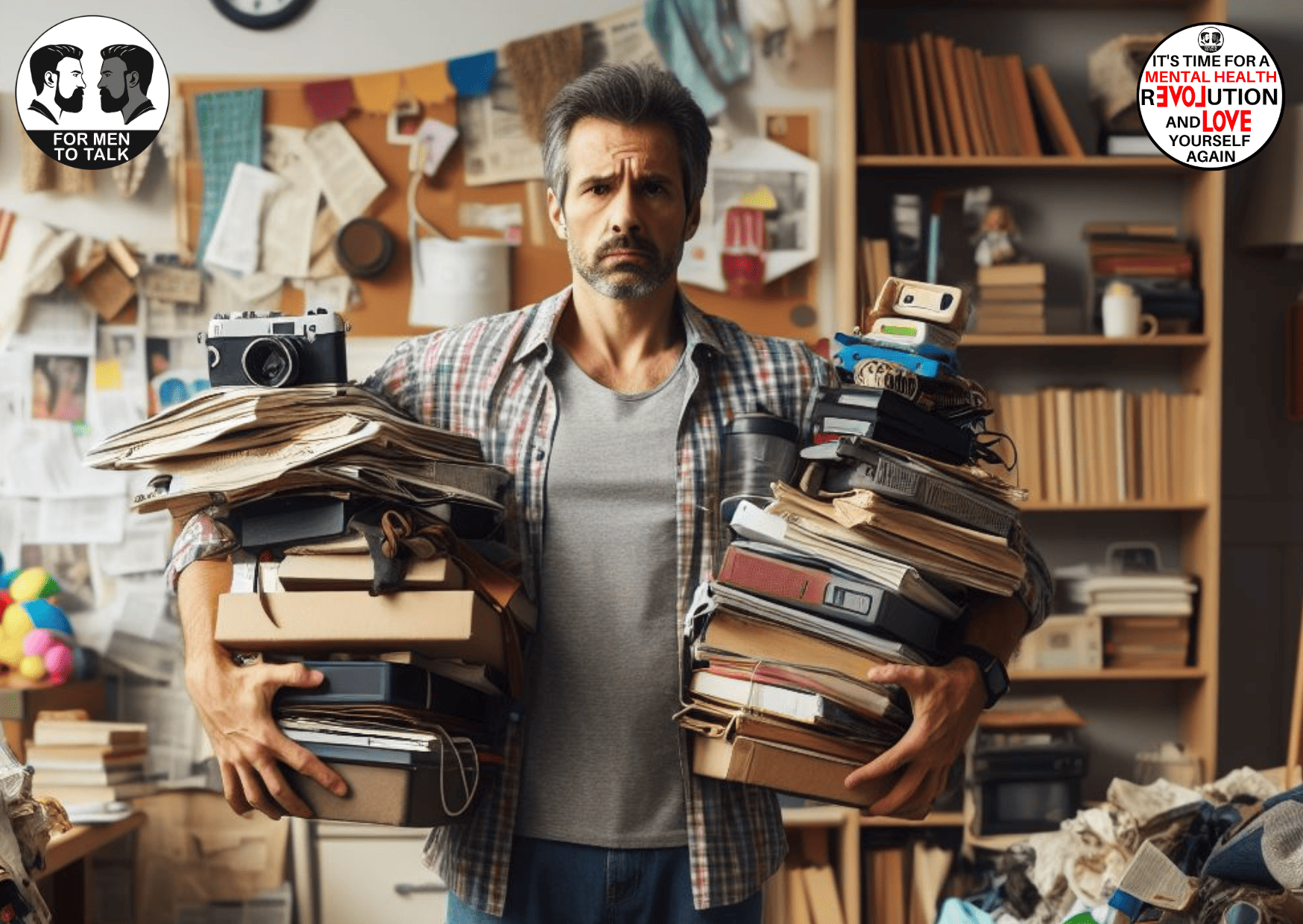Hoarding and its impact on men

Hoarding, a complex psychological disorder characterised by the excessive accumulation of belongings and an unwillingness to discard them, affects individuals across all demographics. While often portrayed in mainstream media as a problem primarily faced by women, hoarding significantly impacts men as well. In this blog post, we delve into the lesser-discussed aspect of hoarding among men, exploring the unique challenges they face and the potential solutions to address this silent struggle.
The Stigma Surrounding Hoarding in Men
Society tends to stereotype hoarding as a predominantly female issue, perpetuating a stigma that can prevent men from seeking help. Men may feel ashamed or embarrassed about their hoarding tendencies due to societal expectations of masculinity. Consequently, they might be less likely to reach out for assistance, further exacerbating the problem.
Understanding the Root Causes
Hoarding often stems from deep-seated emotional issues such as trauma, loss, or anxiety. In the case of men, societal pressures to conform to traditional gender roles may contribute to the development of hoarding behaviours. Men may find it challenging to express vulnerability or seek help for emotional struggles, leading them to cope through accumulating possessions.
Impact on Relationships and Mental Health
The consequences of hoarding extend beyond cluttered living spaces. Relationships, both personal and professional, can be strained as hoarding behaviours create tension and isolation. Men may withdraw from social interactions, experiencing heightened levels of anxiety and depression. The emotional toll of hoarding can be particularly damaging, as individuals grapple with the shame of their habits and the fear of judgment from others.
Breaking the Cycle: Seeking Help
The first step toward overcoming hoarding is acknowledging the issue and seeking professional help. Men may benefit from therapy or counseling to explore the root causes of their hoarding tendencies and develop healthier coping mechanisms. Support groups tailored to men can provide a sense of community and understanding, breaking the isolation often associated with hoarding.
Family and Friends: A Crucial Support System
Creating a supportive environment is essential for individuals struggling with hoarding, and family and friends play a pivotal role. Loved ones can offer emotional support, encouragement, and assistance in the decluttering process. However, it’s crucial for friends and family to approach the situation with empathy and understanding, avoiding judgment or criticism that may exacerbate feelings of shame.
Cognitive-Behavioural Therapy: A Path to Recovery
Cognitive-behavioural therapy (CBT) has proven to be effective in treating hoarding disorders. CBT helps individuals identify and change negative thought patterns and behaviours associated with hoarding. By addressing the underlying issues and providing practical strategies for decluttering, CBT empowers men to take control of their lives and break the cycle of hoarding.
Conclusion
While hoarding is often perceived as a predominantly female issue, it is crucial to recognise that men also grapple with this complex disorder. Breaking the stigma surrounding hoarding in men is essential for fostering an environment where individuals can seek help without fear of judgment. Through a combination of professional therapy, support from loved ones, and a commitment to change, men can overcome hoarding and regain control over their lives. By shedding light on this silent struggle, we can work towards a more inclusive and understanding approach to addressing hoarding in all individuals, regardless of gender.